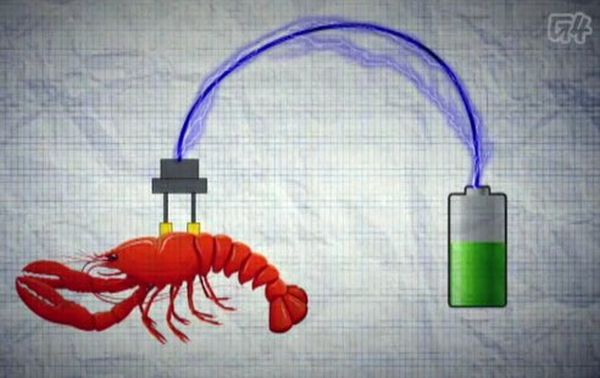Just recently we had talked about how researchers at the Potsdam’s Clarkson University had converted glucose from living snails into electricity. Now the same team has moved up the food chain and is experimenting with lobsters for producing energy from the glucose of their bodies. Of course, it is not yet possible for the power so generated to juice up your iPhone or the like, but the aim is to at least power bio medical products like pace makers, insulin injectors and a number of similar applications.

Literally speaking, the project’s aim is to use a lobster exactly like a conventional battery to power gadgets, and although the procedure might seem simple in a laboratory, its application on a large scale is rather difficult.
The body of lobsters is replete with glucose, which has an electric charge that could be harnessed with the help of enzymes that will help extract charge from inside the molecules. The enzymes used have to prepared and purified in a very specific manner so that they efficiently work on the molecules for the release of the charge.
After purification of the enzyme, it is coated over electrodes made from gold in this case or any other good conductor of electricity. This will then transfer the electricity from the lobster to a capacitor or battery.
As far as getting inside the lobster skin is concerned, only the exoskeleton of the lobster is of use for extraction and transference of electricity. There are no nerves present in the exoskeleton; therefore, the lobster will feel no pain when the modified electrodes will be inserted inside the lobster. Once inside, the electrodes will get in touch with the glucose and the oxygen inside. The enzymes too will work and it is claimed that it will generate approximately 8 to 10 percent charge equivalent to an AAA battery.
The project was lead by Dr. Evgeny Katz. The collective efforts of his team have broght us one step closer to the production of green electricity from animal glucose, so if the worse comes , at least we will this resource as a last resort.
Via: Treehugger




